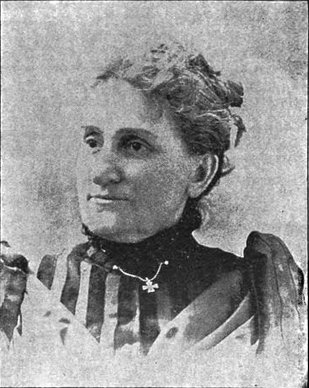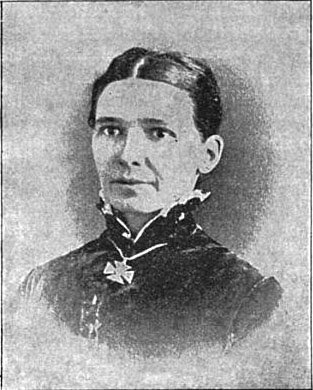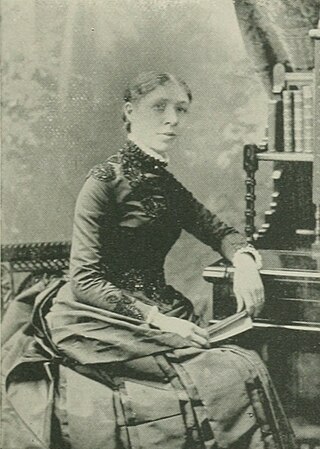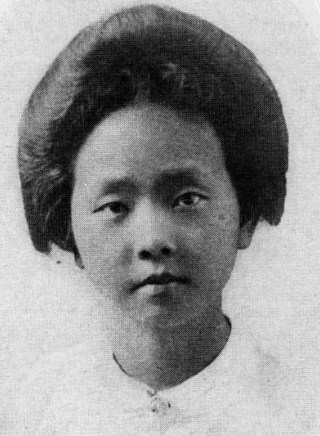
Leonora Howard King was a Canadian physician and medical missionary who spent 47 years practising medicine in China. She was the first Canadian doctor to work in China, where she died in 1925.

Methodist Church in India is a Protestant Christian denomination of India.
The Clara Swain Hospital is a hospital located in Bareilly, India. It was founded by Dr. Clara Swain in the early 1870s to provide focused medical care to women and children. Presently, the Clara Swain Hospital remains the "oldest and largest Methodist hospital in India." At the pinnacle of the hospital's career, 350 patient beds were in use, and an active community outreach program was in place. Additionally, it was the lead institution for nursing education in Northern India. However, by 1998, the hospital had acquired great debt and had only 30 patients in attendance. Subsequently, debate sprung over the decision to officially close the hospital, under the Methodist Church in India.
Sarah Rebecca Parish known as Rebecca Parrish, was an American medical missionary and physician in the Philippines.

Nancie Monelle Mansell was an American physician. She was the second physician sent out by the Woman's Foreign Missionary Society of the Methodist Episcopal Church, and the first woman doctor who went out alone as a missionary into an Indian Princely State. Mansell fought against Indian baby marriages, pleading that the marriageable age of girls be raised to 14 years.

Sigourney Trask was an American physician and missionary. She is remembered as being the first woman physician at Fuzhou, China sent by the Methodist Episcopal Church missionaries.
The Heathen Woman's Friend was a Christian women's monthly newspaper. Established in May 1869, it was published by the Woman's Foreign Missionary Society of the Methodist Episcopal Church in Boston, Massachusetts. The monthly magazine describe conditions in the mission fields of the church, document the work of the society, and provide assistance to missionaries. The Heathen Woman's Friend was launched with volume 1, number 1 in May 1869. Its final issue, volume 27, number 6, was issued December 1895. The publication was relaunched as the Woman's Missionary Friend with volume 27, number 7 in January 1896, and ended with volume 73, number 7 in August 1940.

Annie Ryder Gracey was an American author and missionary of the long nineteenth century. She wrote two books based on her travels, Eminent Missionary Women and Woman's Medical Work in Mission Fields. The history of the literature produced by the Woman's Foreign Missionary Society of the Methodist Episcopal Church was closely linked with Gracey, who served as chairman of the committee on literature, and created missionary literature for the Society.

Woman's Foreign Missionary Society of the Methodist Episcopal Church was one of three Methodist organizations in the United States focused on women's foreign missionary services, the others being the WFMS of the Free Methodist Church of North America and the WFMS of the Methodist Protestant Church.

Ailie May Spencer Gale (1878–1958) was an American physician. She served as a medical missionary in China under commission from the Methodist Episcopal Board of Missions from 1908 to 1950 alongside her husband Rev. Francis Gale, a religious missionary. Committed to a lifetime of unpaid social activism, Gale's work emphasized an approach to patient care that focused on preventative care and public health, humane treatment, and consideration for the whole patient, entailing concern for physical, spiritual, and intellectual needs. She also had evangelical motives and sought to promote the status of Chinese women.

Esther E. Baldwin was an American missionary, teacher, translator, writer, and editor of the long nineteenth century. Known as "Chinese Champion", she understood the religious and political problems of China, and the Chinese people, as perhaps no other woman in this country did at that time. She labored constantly to bring about a better understanding between the two nations. Baldwin served as president of the New York Woman's Missionary Society for two decades.

Martha A. Sheldon was an American medical missionary in India, Nepal, and Tibet.
Beulah Woolston was a pioneering American missionary teacher in China. With her sister, she founded schools, translated textbooks, and edited a Chinese-language newspaper.
Lucinda L. Combs-Stritmatter was an American physician who was the first female medical missionary to provide medical care in China and is credited with establishing the first women's hospital in what was then Peking. Combs was a pioneer in women's medical care while serving the Women's Foreign Ministry Society's North China Mission for seven years.

Harriette G. Brittan was a pioneer British-born American missionary to Liberia, India and Japan. Finding herself unable to live in Africa because of repeated attacks of tropical fever, she was compelled to return to the United States. A year or two later, she went to India where she labored for twenty years. In 1880, she came to Japan and founded Brittan Girls’ School, later known as Yokohama Eiwa Gakuin. At the age of sixty-three, she gave up regular mission work and for a number of years, conducted a boarding house. When her health started to fail, she returned to the U.S. and died one day after reaching San Francisco.

Mary Ann Lyth was a British missionary, translator, and teacher. She traveled to several countries with her husband, Rev. R. B. Lyth, M.D., the first Medical Missionary sent out by the Wesleyan Methodist Missionary Society, London. She provided basic European-style education at her various stations, and helped her husband as a nurse. She also assisted in the translation of the Bible, and other literary work.

Clementina Butler was an American evangelist and author. She was a founder of the Ramabai Association, an organization that established the first school in India for widowed women. She was also the founder and chair of the "Committee on Christian Literature for Women and Children in Mission Fields, Inc. In addition to other writings, she was the author of three biographies: her father's, her mother's, as well as Pandita Ramabai Sarasvati : pioneer in the movement for the education of the child-widow of India (1922).

Clementina Rowe Butler was an Irish-born American Christian missionary. She co-founded the Woman's Foreign Missionary Society of the Methodist Episcopal Church. At the time of her death, she was reputed to be the oldest missionary in the world.
Lucilla Green Cheney, M.D. was a 19th-century American physician and Christian missionary. Beginning in 1876, she served in British India under the auspices of the Woman's Foreign Missionary Society of the Methodist Episcopal Church. Stricken with cholera, she died in India after only two years of service.

Phebe Stone was a physician and medical missionary who worked in Kiukiang (Jiujiang), China. She was the younger sister of the notable missionary Mary Stone, also known as Shi Meiyu. Her family was from the Hubei province in China and were one of a handful of Christians in the area. Stone went on to Goucher College in the United States for her undergraduate degree and later was awarded a fellowship to attend Johns Hopkins, where she received medical degree in 1918. Stone was the first Chinese woman to graduate from Johns Hopkins School of Medicine. Afterward, Stone briefly worked as a medical intern at a women's hospital in Worcester, Massachusetts, then returned to her hometown of Jiujiang to take over the Danforth Hospital established by her sister Mary. She later founded the Bethel Mission and its encompassing hospital in 1920 along with Mary and the American missionary Jennie Hughes. She contracted tuberculosis and died in 1930.
















